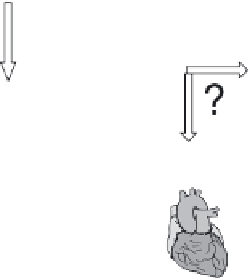Biomedical Engineering Reference
In-Depth Information
BM mononuclear cells,
Umbilical cord blood
Mobilised peripheral blood
Foetal liver
Purify c-Kit
+
VEGFR1
+
HSCs
and HPCs
Purify VEGFR2
+
CD133
+
EPCs
and CEPs
Ex vivo
expansion
with Flk-2,
Kit-ligand
Ex vivo
expansion with
tissue-specific growth
factors
Differentiation into
proangiogenic
haematopoietic cells
GM-CSF
G-CSF
M-CSF
TPO
Induce differentiation
to mature endothelium
Myeloid cells
Gene therapy
Tissue engineering
Coating of vascular grafts
Platelets
Direct organ delivery
Intravenous delivery
12.3
Large numbers of vascular cells are necessary when seeding
tissue engineered blood vessels. Very few endothelial progenitor
cells (EPCs), circulating endothelial progenitor cells (CEPs),
haematopoietic stem cells (HSCs) and haematopoietic progenitor
cells (HPCs) may be harvested from adult bone marrow. To augment
cell numbers, EPCs, CEPs, HSCs and HPCs may be harvested from
stem cell side populations such as foetal liver, umbilical cord blood
and peripheral blood. The harvested cells would be expanded
in vitro
in the presence of optimised combinations of relevant growth and
other factors. The expanded and readily transplantable EPC, CEP,
HSC and HPC populations would then be injected individually or in
combination to enhance tissue regeneration. The technique used to
reintroduce these cell populations into the patient may infl uence the
effi cacy of tissue regeneration. Cells may be introduced directly into
the injured tissue as part of a graft or as an infusion. Alternatively,
the cells may be administered indirectly via intravenous infusion.
GM-CSF, granulocyte-macrophage colony-stimulating factor; G-CSF,
granulocyte colony-stimulating factor; M-CSF, macrophage colony-
stimulating factor; TPO, thrombopoietin. Reprinted by permission
from Macmillan Publishers Ltd:
Nature Medicine
(Rafi i and Lyden),
copyright (2003).











































































































Search WWH ::

Custom Search